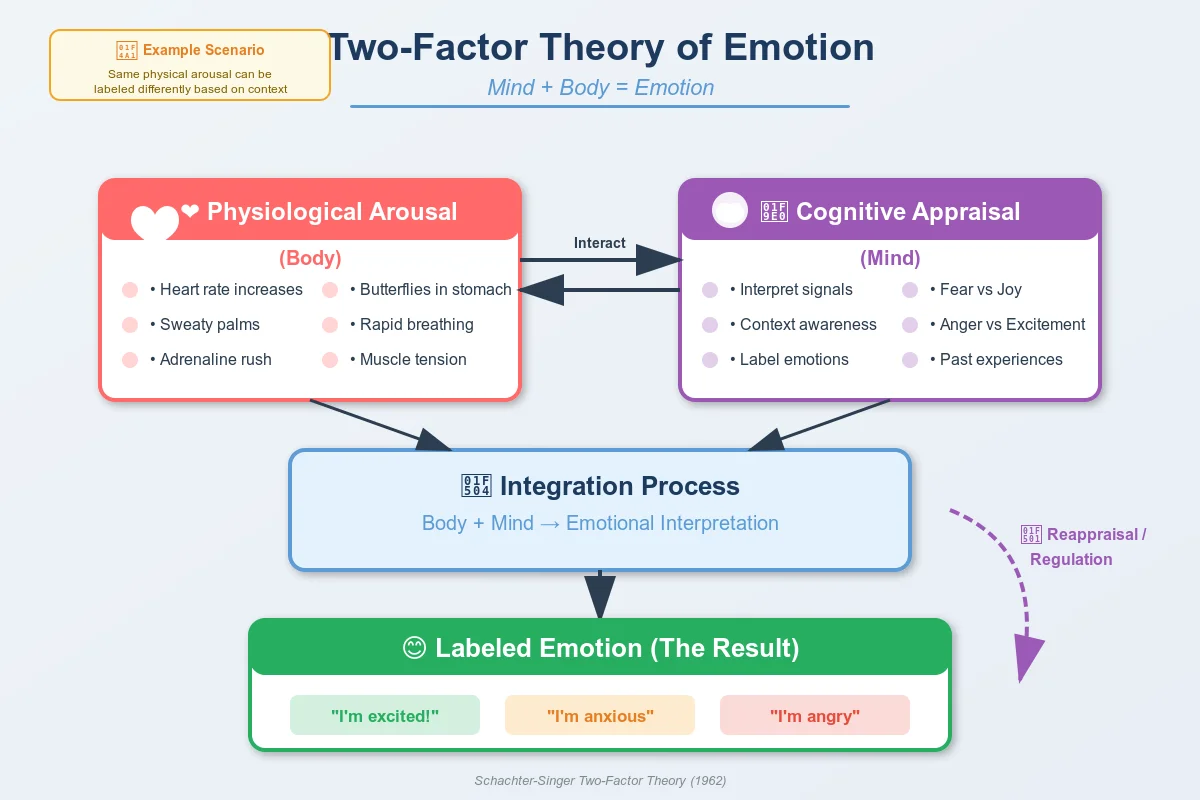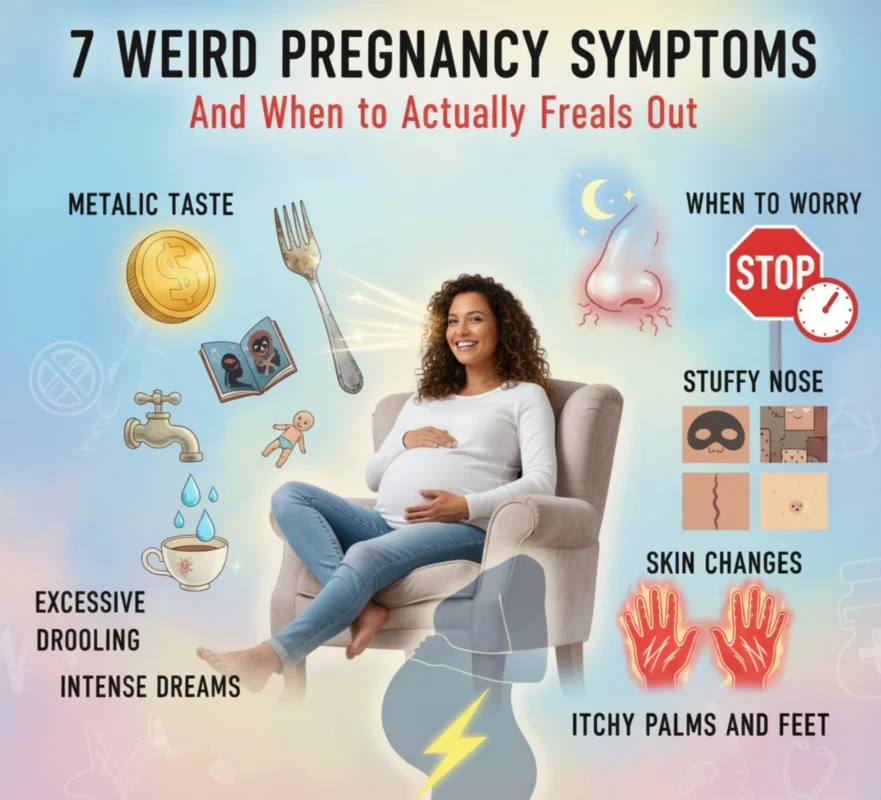Blog
Two-Factor Theory: Mind + Body = Emotion

Why emotions matter in everyday health
We all know that emotions affect how we live: stress can ruin a workout, anxiety can disrupt sleep, and excitement can boost motivation. But where do these feelings really come from? The Two-Factor Theory of Emotion, introduced by Stanley Schachter and Jerome Singer in 1962, offers a simple but powerful answer: your body reacts first, then your mind gives that reaction meaning. This mind–body partnership helps explain everything from nervous sweats before a date to the adrenaline rush during a gym session.
How body and mind team up
According to the theory, emotions don’t just “happen.” They’re created when your body’s signals—like a racing heart, sweaty palms, or tense muscles—are labeled by your brain. For example, your pounding heart might mean fear if you’re walking alone at night, or excitement if you’re about to go skydiving. This shows how much your mental health depends on the way you interpret your physical state.
Lessons from the classic experiment
In the original study, people were given adrenaline (which speeds up the body) and then placed with an actor who was either cheerful or irritable. Those who didn’t know about the drug matched the actor’s mood—they “caught” happiness or anger depending on the situation. Those who did know were less influenced. The takeaway? Context and interpretation shape emotional well-being just as much as raw body signals do.
Everyday health example: the shaky bridge
Another famous test looked at men who met a woman on a shaky bridge. Their hearts raced from fear, but many misread that arousal as attraction—and were more likely to call her later. This is a reminder of how easy it is to mislabel stress as something else, which plays out in daily lifestyle choices too. Think about mistaking stress for hunger, or nerves for fatigue—our interpretations can affect both emotional and physical health.
What this means for stress and wellness
Here’s the good news: if emotions depend on interpretation, you can train yourself to reframe stress. A fast heartbeat before a job interview can be relabeled as “my body preparing me” instead of “I’m falling apart.” Athletes often use this trick to improve performance, while mindfulness practitioners use it to improve emotional balance. In both cases, the key is seeing your body as an ally, not an enemy.
Why this matters for a healthy lifestyle
- Mindfulness and meditation help you notice body cues without rushing to negative labels.
- Exercise and fitness raise your heart rate, but with a positive label, that energy feels empowering instead of draining.
- Healthy routines like balanced nutrition and sleep give your body more predictable signals, which makes it easier for your brain to interpret them correctly.
- Stress management techniques—like breathing exercises or journaling—help reset body signals so emotions don’t spiral.
What modern science adds
Newer research in neuroscience, like Lisa Feldman Barrett’s Theory of Constructed Emotion, suggests emotions are built from both body sensations and brain predictions. This matches what lifestyle experts preach: taking care of your physical health—through sleep, diet, exercise, and relaxation—also protects your mental health by shaping how your brain interprets arousal.
How to apply it in your daily life
- Tune in: Notice your physical signals—heart racing, sweaty palms, butterflies in your stomach.
- Check the setting: Ask, “What’s happening around me that could explain this?”
- Reframe positively: If it’s stress, try calling it “energy” or “readiness.”
- Practice balance: Use lifestyle habits—like yoga, mindfulness, or walks in nature—to keep your body calm enough for clearer labeling.
The bottom line
“Mind + Body = Emotion” isn’t just a psychological theory—it’s a wellness tool. Your body provides the raw energy, and your mind gives it meaning. When you learn to read your signals wisely, you can reduce stress, feel more balanced, and enjoy a healthier lifestyle. Whether it’s staying calm in traffic, performing better at the gym, or finding peace through mindfulness, the Two-Factor Theory shows how your body and brain work together to shape your emotional world.
References
- Schachter, S., & Singer, J. E. (1962). Cognitive, social, and physiological determinants of emotional state. Psychological Review.
- Dutton, D. G., & Aron, A. P. (1974). Some evidence for heightened sexual attraction under conditions of high anxiety. Journal of Personality and Social Psychology.
- Zajonc, R. B. (1980). Feeling and thinking: Preferences need no inferences. American Psychologist.
- Lazarus, R. S. (1982). Thoughts on the relations between emotion and cognition. American Psychologist.
- Barrett, L. F. (2017). How Emotions Are Made: The Secret Life of the Brain.












